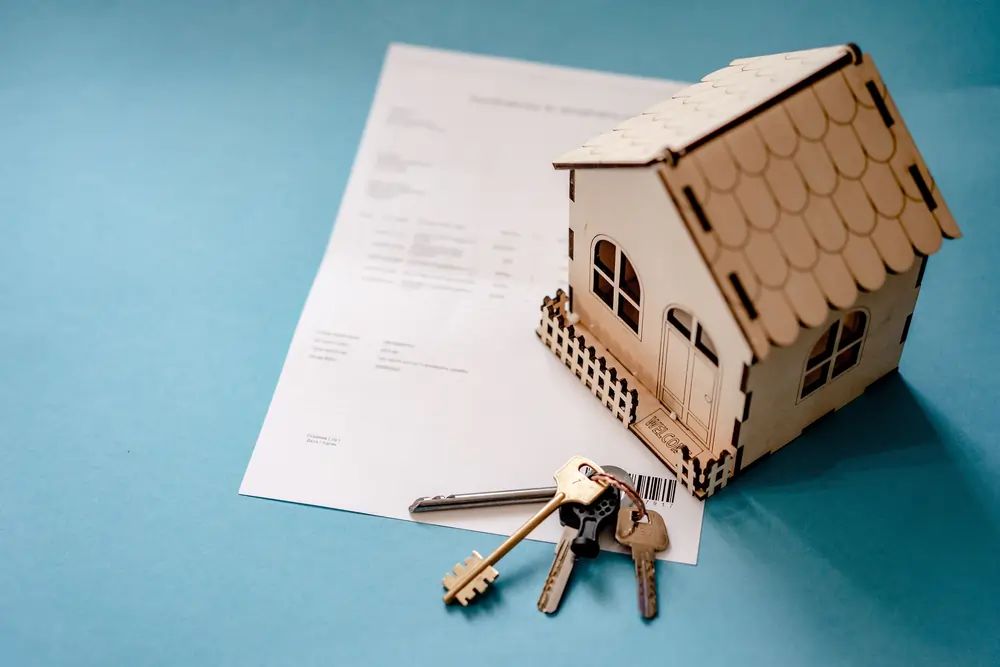In today’s fast-paced real estate market, understanding commercial property value is crucial for investors, business owners, and real estate professionals. But with so many factors at play, determining the true worth of a commercial property can be a daunting task. How can you be sure you’re making the right investment decisions? What if you’re leaving money on the table?
Let’s dive into the world of commercial real estate value and uncover the secrets to accurate property valuation. By the end of this article, you’ll have the knowledge and tools to confidently assess and maximize the value of commercial properties in 2024.
Commercial Property Value
If you’ve ever wondered what makes a commercial property truly valuable, you’re not alone! Whether you’re a real estate investor, a business owner, or simply curious, understanding commercial property value is crucial. In 2024, property valuation has become more sophisticated, incorporating various economic indicators and market trends. This guide will walk you through the key factors influencing commercial property value and provide practical tips for accurate valuation. Buckle up, as we dive into the complexities of commercial real estate!
Key Factors Influencing Commercial Property Value
When it comes to valuing a commercial property, there are several key factors to consider. The fair market value is a biggie, often determined by the price per square foot. Another popular commercial real estate valuation method is the gross rent multiplier or grm, which looks at the gross rental income compared to the purchase price.
Commercial real estate investors also use the capitalization approach and income capitalization approach to gauge the value of a commercial property. These methods focus on rental income and gross income. The value of the land and replacement cost approach are other factors that play into the current market value.
Tools like a commercial property value estimator can help determine the fair market value and calculate commercial property value. Ultimately, the market value of commercial properties hinges on various elements, including square footage and the time value of money. So, if you’re investing in commercial real estate, make sure to consider these factors to value the property accurately.
Location: The Golden Rule of Real Estate

You’ve heard it before: location, location, location. But why is it so important? The property location impact goes beyond just curb appeal. A prime location can mean:
- Higher foot traffic for retail spaces
- Easy access for office workers
- Proximity to transportation hubs for industrial properties
Consider this: A study by the Urban Land Institute found that properties within a quarter-mile of public transit had a 42% higher value compared to those farther away. Could your property’s location be its hidden goldmine?
Market Conditions: Riding the Economic Waves
Market conditions and property value are inextricably linked. Economic cycles, interest rates, and local market trends all play a role in determining a property’s worth. In 2024, we’re seeing:
- Rising interest rates affecting financing costs
- Shifts in demand due to remote work trends
- Increased focus on sustainability and green building practices
Real estate market trends can make or break an investment. Are you keeping your finger on the pulse of these changes?
Property Size and Type: Finding the Right Fit
The property size and valuation relationship isn’t always straightforward. While larger properties may command higher prices, the value per square foot can vary greatly depending on:
- Property type (office, retail, industrial)
- Local market demand
- Potential for future development
For example, a small, well-located retail space might have a higher value per square foot than a large, poorly situated office building. Is your property the right size for its market?
Tenant Quality and Lease Terms: The Lifeblood of Commercial Real Estate
Tenant quality and property value are closely linked. Strong, long-term tenants with solid credit ratings can significantly boost a property’s worth. Consider these factors:
- Length and stability of lease agreements
- Tenant’s financial health and industry outlook
- Rent escalation clauses and renewal options
A case study by CBRE found that properties with high-credit tenants and long-term leases commanded cap rates 50-100 basis points lower than similar properties with weaker tenants. How do your tenants stack up?
Property Condition and Age: The Battle Against Time
The property condition and value relationship is straightforward: well-maintained properties hold their value better. But it’s not just about aesthetics. Consider:
- Energy efficiency and sustainability features
- Modern amenities and technology infrastructure
- Compliance with current building codes and regulations
A study by the Building Owners and Managers Association (BOMA) found that Class A office buildings command rents 47% higher than Class B buildings. Is your property living up to its potential?
Valuation Techniques for Commercial Properties

So, you’re looking into the value of a property and wondering how the pros handle commercial property valuation. Well, commercial real estate professionals have several tricks up their sleeves to figure out the fair market value of commercial properties. They use methods like the price per square foot approach and look at comparable properties in the area to calculate the value of the property.
When it comes to commercial assets, determining the value of commercial real estate can be tricky. You’ll need to consider the current value of the land, how much it would cost to build the property from the ground up, and the present value of the specific property. This helps in figuring out the commercial property’s value at the time you want to buy a property.
Another way to determine the market value of a property is by looking at the sale price at the end of similar properties. This tells you what the property is worth and the difference between the purchase price and its eventual sale price. Knowing the values and market trends is crucial when you’re about to purchase a property.
Income Approach: Show Me the Money
The income approach to property valuation is the go-to method for income-producing properties. It’s based on the principle that a property’s value is directly related to the income it generates. Key components include:
- Net Operating Income (NOI)
- Capitalization Rate (Cap Rate)
- Discounted Cash Flow Analysis (DCF)
For example, if a property has an NOI of $500,000 and the market cap rate is 6%, the property value would be $8,333,333 ($500,000 / 0.06). But is the cap rate you’re using accurate for your market?
Comparative Market Analysis (CMA): Learning from the Neighbors
A Comparative Market Analysis looks at recent sales of similar properties to determine value. This method considers:
- Location and property characteristics
- Sale prices and terms
- Market conditions at the time of sale
While seemingly straightforward, a skilled analyst can uncover hidden value by identifying truly comparable properties and making appropriate adjustments. Are you comparing apples to apples?
Cost Approach: Building from the Ground Up
The cost approach in real estate estimates value based on what it would cost to replace the property. This method is particularly useful for:
- New or unique properties
- Properties with special-use features
- Insurance valuation purposes
Remember, the cost approach includes land value plus the cost of improvements, minus depreciation. Could this method reveal hidden value in your property?
Sales Comparison Approach: Market-Driven Valuation
The sales comparison approach analyzes recent sales of similar properties to determine value. It’s a market-driven method that considers:
- Property characteristics and condition
- Location and market conditions
- Sale prices and terms
This approach is widely used but requires careful analysis to ensure comparability. Are you using the right comparables for your property?
Market Trends and Their Impact on Commercial Property Value
Keeping an eye on market trends is crucial for understanding the value commercial real estate holds. When you’re looking at an investment property, factors like the cost per square foot would significantly impact the estimated sale price.
To get an accurate commercial property appraisal, you need to consider the value for commercial spaces in the area. The property at the time of purchase can vary, so it’s essential to know what metrics are used to value a new property.
The income a property would generate also determines a commercial property’s value. When making real estate deals, always check the property’s value based on current trends. This property based approach helps in making informed decisions.
Economic Indicators: The Big Picture
Real estate economic indicators provide crucial context for property valuation. Keep an eye on:
- GDP growth and job market trends
- Inflation rates and consumer spending
- Interest rates and lending conditions
For instance, the Federal Reserve’s interest rate decisions can have a significant impact on commercial real estate cap rates. Are you factoring these indicators into your valuation?
Real Estate Market Trends: Adapting to Change
The commercial property market conditions in 2024 are shaped by several key trends:
- The ongoing impact of remote work on office demand
- The rise of e-commerce and its effect on retail and industrial properties
- Increasing focus on sustainability and wellness features
A report by JLL found that 74% of occupiers are willing to pay a premium for healthy buildings. Is your property positioned to capitalize on these trends?
Regulatory Changes: Navigating the Legal Landscape
The regulatory impact on property value can be significant. Stay informed about:
- Zoning changes and development regulations
- Environmental and energy efficiency standards
- Tax laws and incentives
For example, New York City’s Local Law 97, which sets carbon emission limits for buildings, could significantly impact property values and operating costs. Are you prepared for regulatory changes in your market?
Tips for Maximizing Commercial Property Value
Hey, if you wanna boost your commercial property value, start by sprucing it up a bit. A fresh coat of paint and some landscaping can work wonders. Also, think about ways to increase the income it generates, like adding more units or renting out extra space. Happy upgrading!
Property Upgrades: Strategic Improvements
Commercial property upgrades can significantly boost value, but it’s crucial to focus on improvements with the highest ROI:
- Energy efficiency upgrades
- Modernizing common areas and amenities
- Enhancing technology infrastructure
A study by the Urban Land Institute found that green retrofits can increase building value by up to 7%. Which upgrades would yield the best return for your property?
Effective Property Management: The Value of Good Stewardship
Property management strategies can have a substantial impact on value. Focus on:
- Proactive maintenance and repairs
- Efficient operations and cost management
- Strong tenant relationships and retention
Effective management can reduce operating expenses and increase NOI, directly impacting property value. Is your management team maximizing your property’s potential?
Optimizing Lease Agreements: Structuring for Success
Property lease agreements are a key driver of value. Consider:
- Longer lease terms with credit-worthy tenants
- Built-in rent escalations
- Triple net (NNN) lease structures
A well-structured lease can provide stable income and reduce risk, making your property more attractive to investors. Are your leases optimized for long-term value?
Market Positioning: Standing Out from the Crowd
Market positioning for real estate is crucial in a competitive landscape. Differentiate your property by:
- Identifying and targeting specific tenant needs
- Emphasizing unique features or location advantages
- Creating a strong brand identity for your property
Effective positioning can lead to higher occupancy rates and stronger tenant demand. How does your property stand out in the market?
Conclusion
Understanding and evaluating commercial property value is a blend of art and science. By considering location, market conditions, and valuation techniques, you can gain a clearer picture of a property’s worth. Remember, staying informed about market trends and adopting strategies to enhance your property can significantly impact its value. Ready to dive deeper or have questions? Share your thoughts in the comments, and don’t forget to explore our other resources for more insights!
Understanding and maximizing commercial property value requires a multifaceted approach. By considering key factors, employing various valuation techniques, staying attuned to market trends, and implementing strategic improvements, you can unlock the full potential of your commercial real estate investments.
Remember, the commercial real estate market is always evolving. Stay informed, be proactive, and don’t hesitate to seek expert advice when needed. Your property’s true value might be higher than you think – are you ready to discover it?

